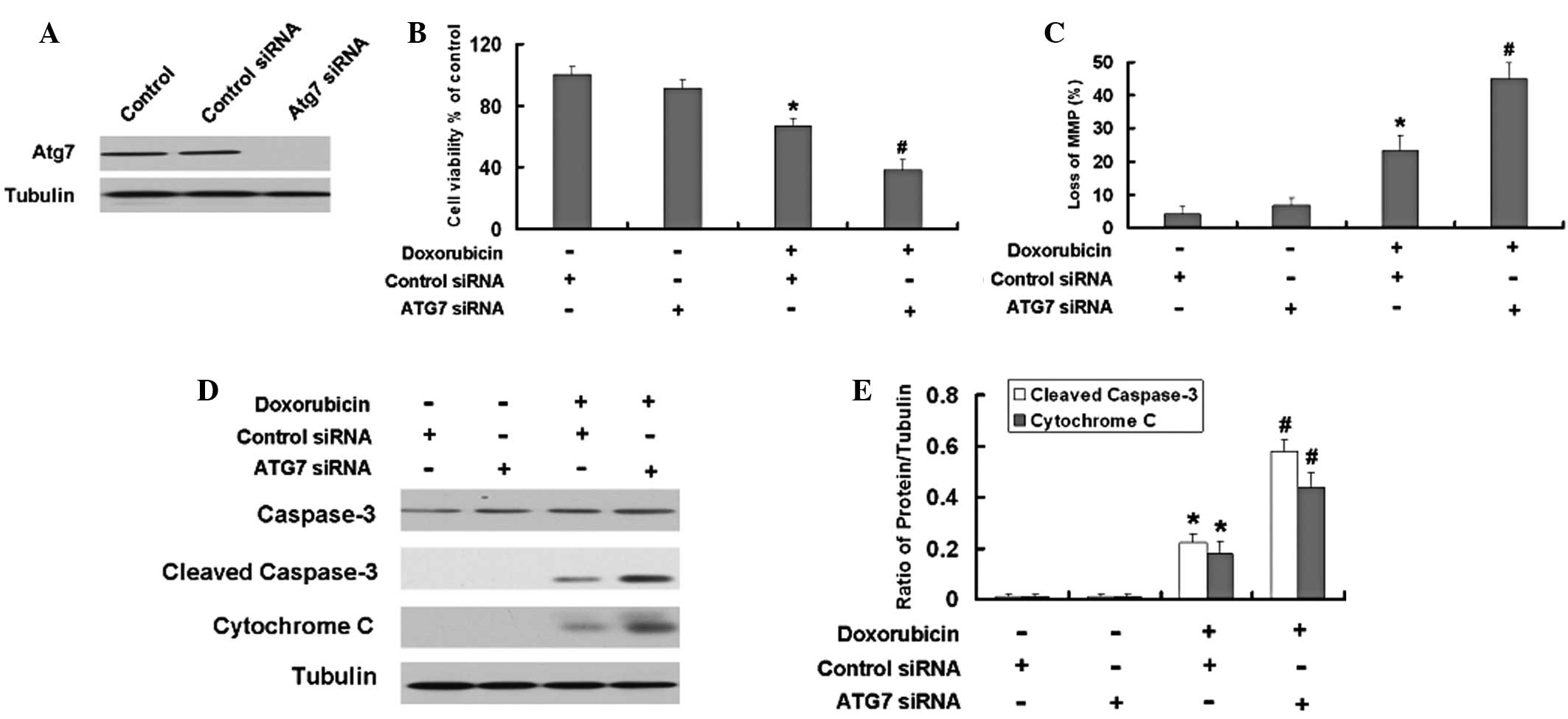Autophagy prevents doxorubicin‑induced apoptosis in osteosarcoma
- Authors:
- Published online on: March 14, 2014 https://doi.org/10.3892/mmr.2014.2055
- Pages: 1975-1981
Metrics: Total
Views: 0 (Spandidos Publications: | PMC Statistics: )
Total PDF Downloads: 0 (Spandidos Publications: | PMC Statistics: )
Abstract
Autophagy is a process of selective degradation of cellular components. Autophagy is an adaptive process in the majority of tumor cells; it provides sufficient nutrients by degrading cellular components to enhance the survival of tumors. Osteosarcoma is the most common type of primary malignant bone tumor in children and adolescents. Identification of an improved therapeutic strategy for the treatment of osteosarcoma is urgently required. Osteosarcoma has been primarily treated by chemotherapy and the phenomena of resistance to the therapy has become increasingly common. Doxorubicin (Dox) is a classic chemotherapeutic drug for the treatment of osteosarcoma, and certain studies have suggested that Dox induces autophagy. On the basis of the protective effect of autophagy for tumors, the present study investigated whether U2OS and Saos‑2 osteosarcoma cells activate autophagy to reduce Dox‑induced apoptosis. Dox was observed to inhibit the growth of U2OS and Saos‑2 osteosarcoma cells in a concentration‑dependent manner. The results of the western blot analysis demonstrated that Dox induced increased expression levels of the apoptosis‑related proteins cleaved caspase‑3 and cytochrome c and loss of mitochondrial membrane potential (MMP) in the U2OS and Saos‑2 osteosarcoma cells. Furthermore, the results of the western blot analysis also revealed that Dox increased the expression levels of the autophagy‑related protein microtubule‑associated protein 1 light chain 3 and reduced those of p62 in the U2OS and Saos‑2 osteosarcoma cells. In order to determine the effect of autophagy on the apoptosis induced by Dox in the U2OS and Saos‑2 osteosarcoma cells, autophagy‑related protein (Atg)7 small interfering (si) RNA or the autophagy inhibitor 3‑methyladenine (3‑MA) alone or combined with Dox was used in U2OS and Saos‑2 osteosarcoma cells. The results identified that Atg7 siRNA and the autophagy inhibitor 3‑MA significantly elevated the levels of growth inhibition by Dox and markedly increased the expression levels of the apoptosis‑related proteins cleaved caspase‑3 and cytochrome c, and reduced the levels of MMP in the U2OS and Saos‑2 osteosarcoma cells, which were treated with Dox. These results indicated that autophagy was the protective mechanism used by U2OS and Saos‑2 osteosarcoma against Dox‑induced apoptosis. The inhibition of autophagy notably increases the levels of apoptosis induced by Dox. This suggested that Dox used in combination with autophagy inhibitors may effectively treat osteosarcoma.
















